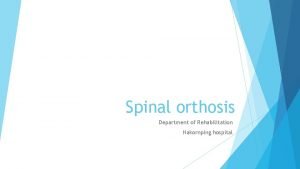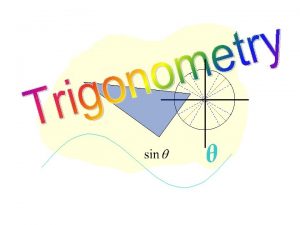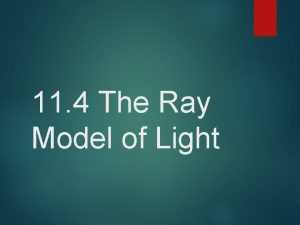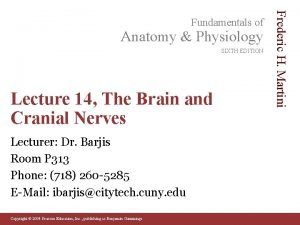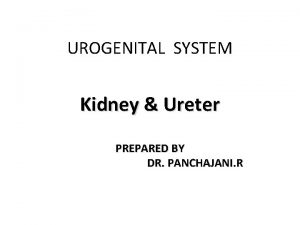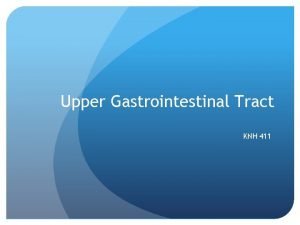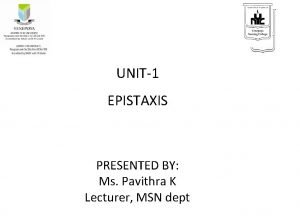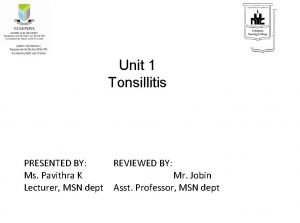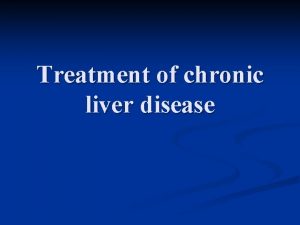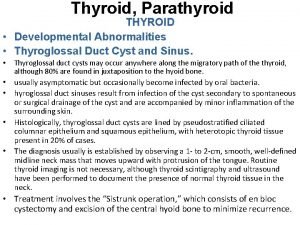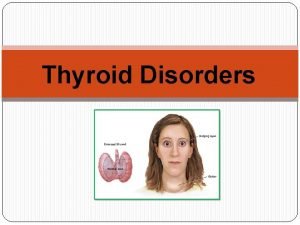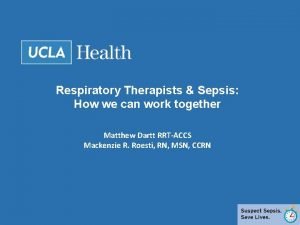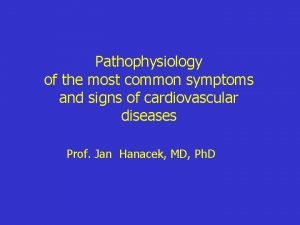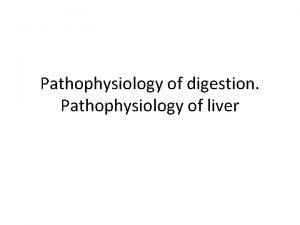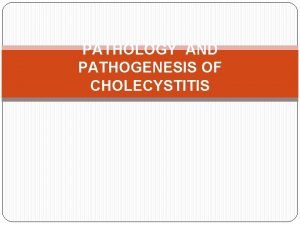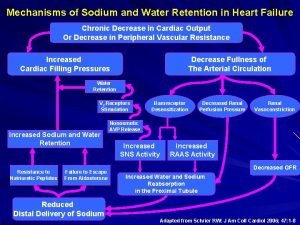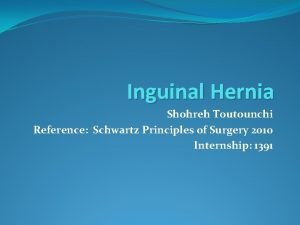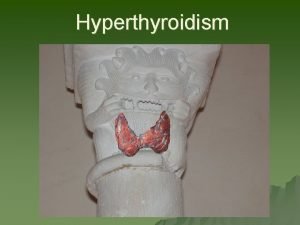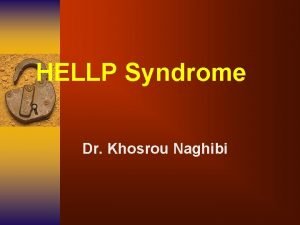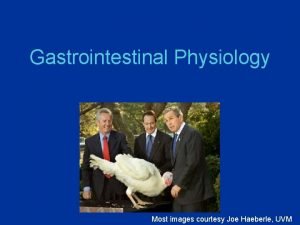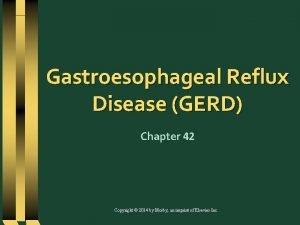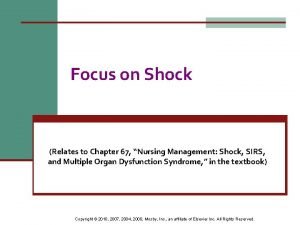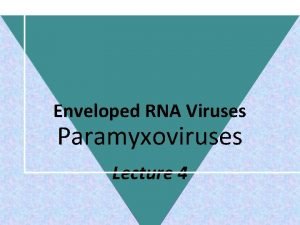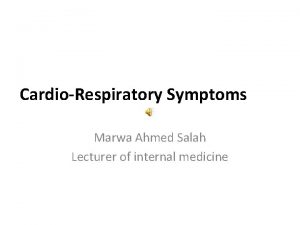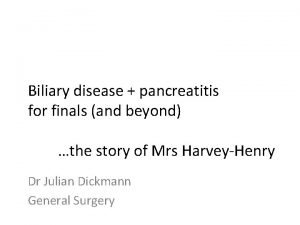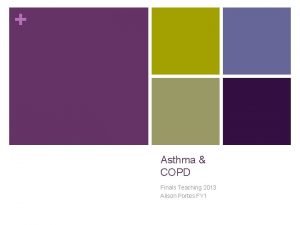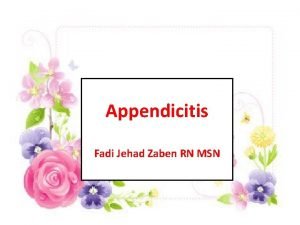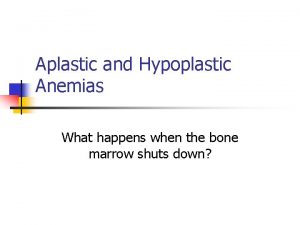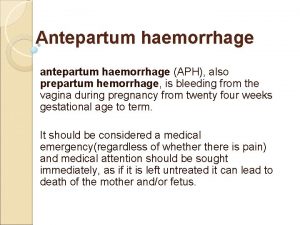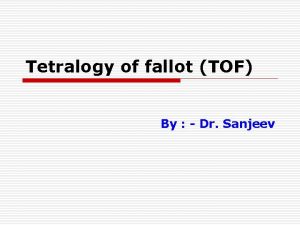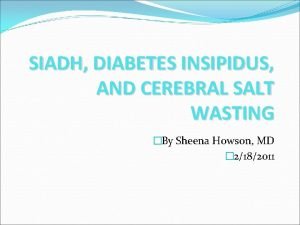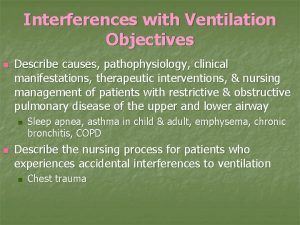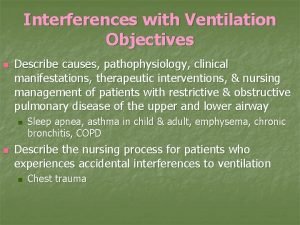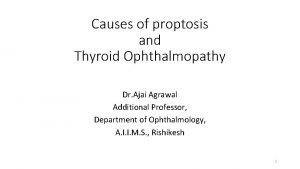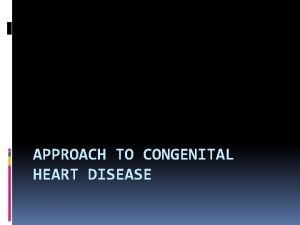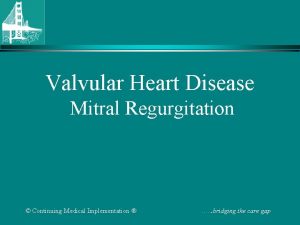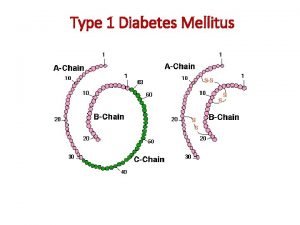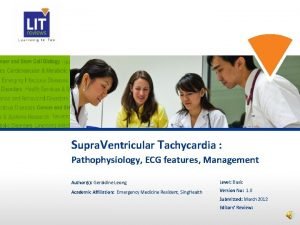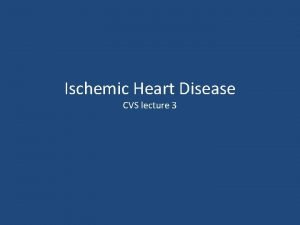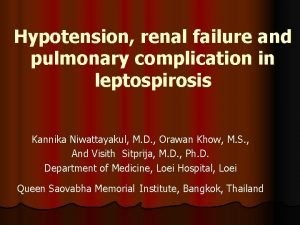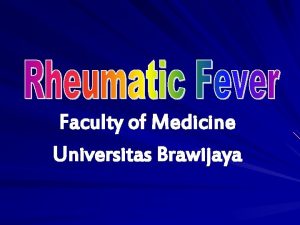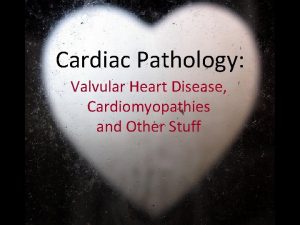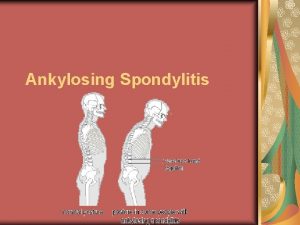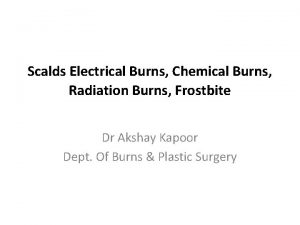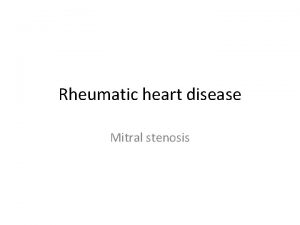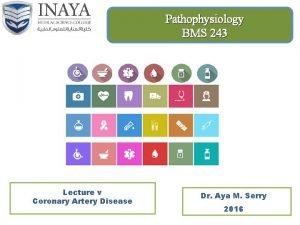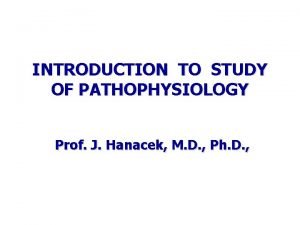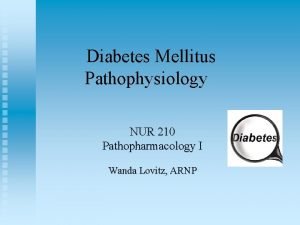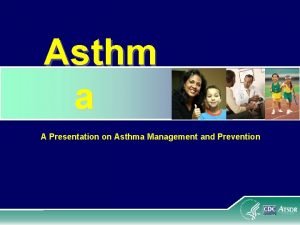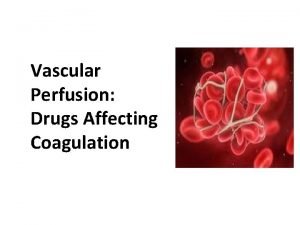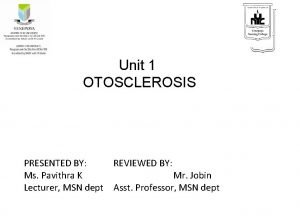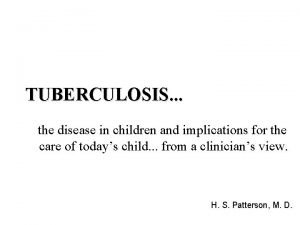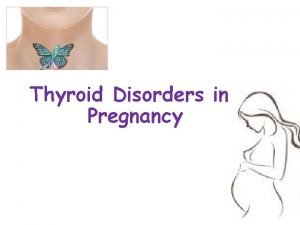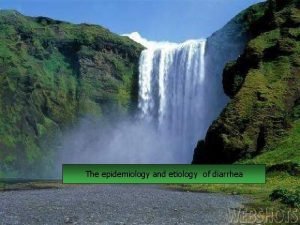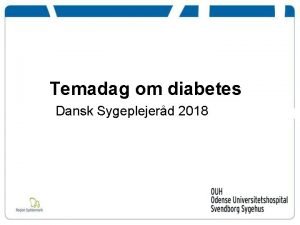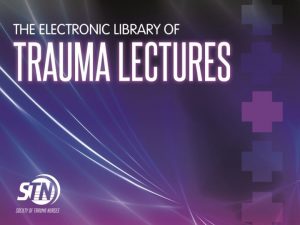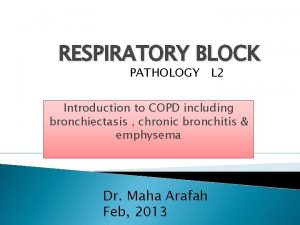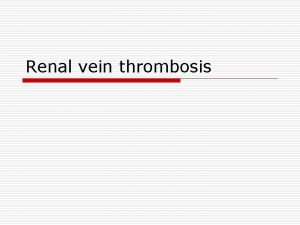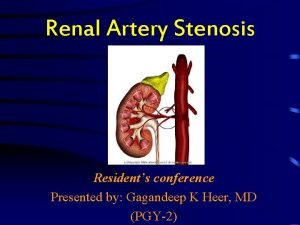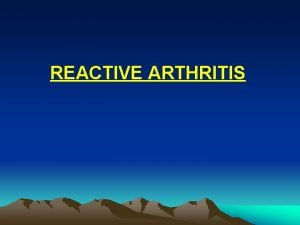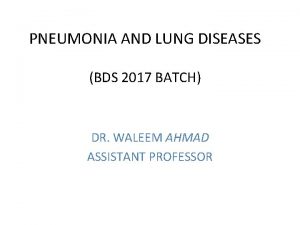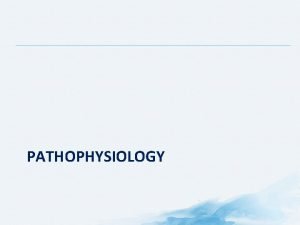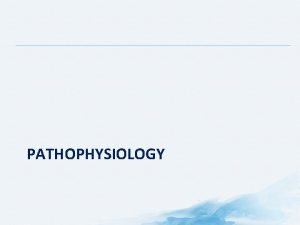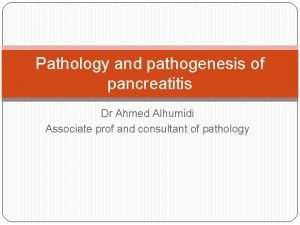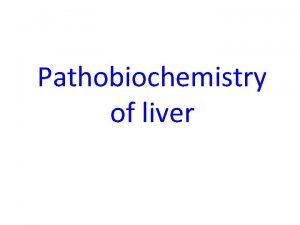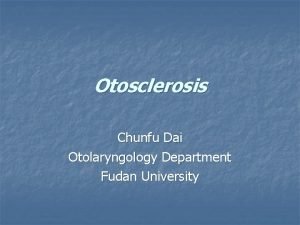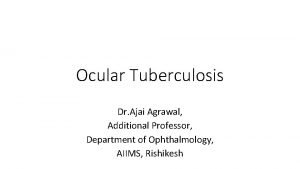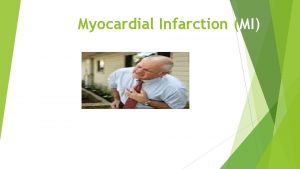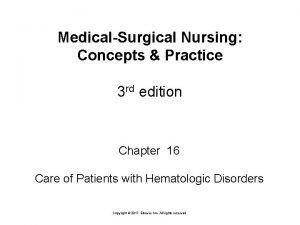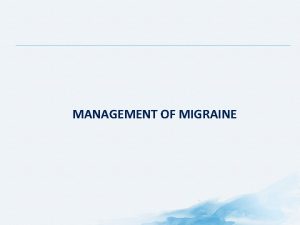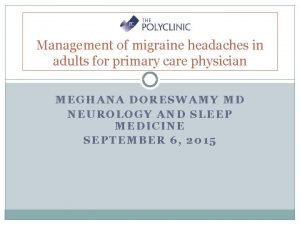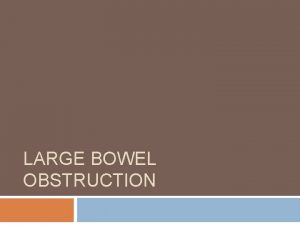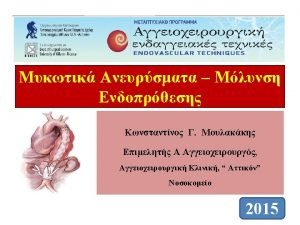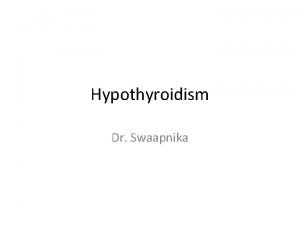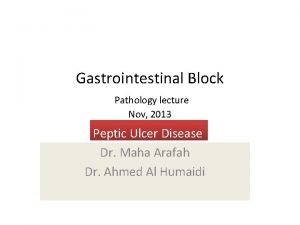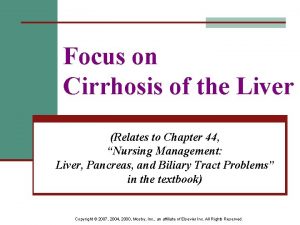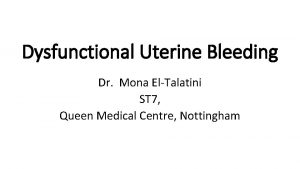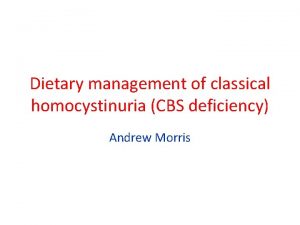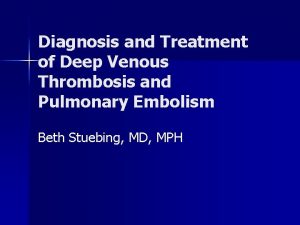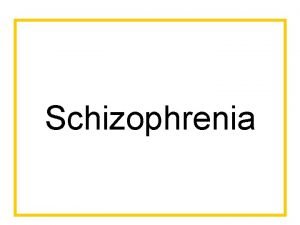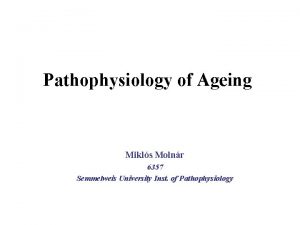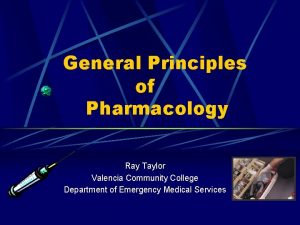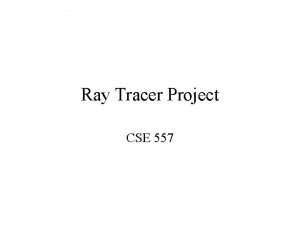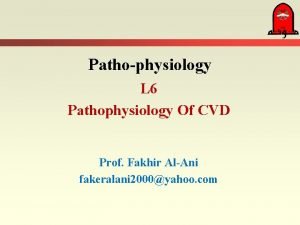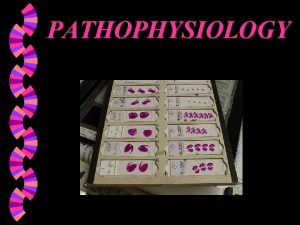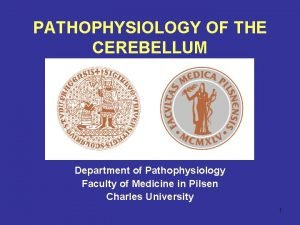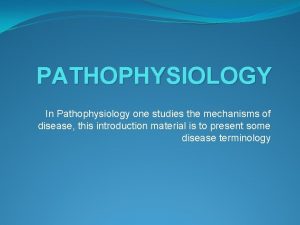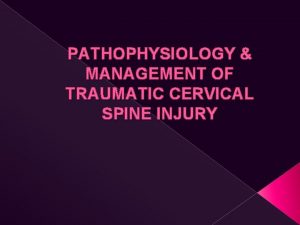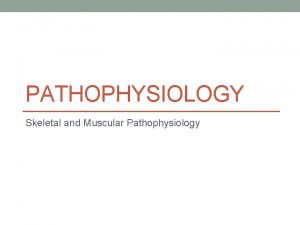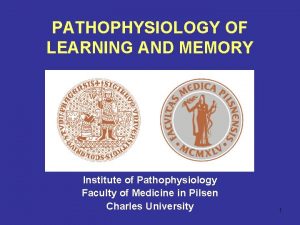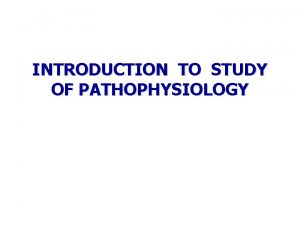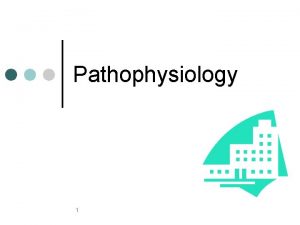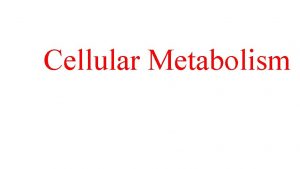GENERAL PRINCIPLES OF PATHOPHYSIOLOGY Cellular Physiology Ray Taylor















































































































- Slides: 111

GENERAL PRINCIPLES OF PATHOPHYSIOLOGY “Cellular Physiology” Ray Taylor Valencia Community College Department of Emergency Medical Services

Topics Introduction The Cell Types of Tissue Disease Causes Disease Pathophysiology

The Cell and the Cellular Environment

Introduction Correlation of pathophysiology with disease process Cells appear similar to multicellular “social” organism l Cells communicate electrochemically l l When interrupted disease processes can initiate and advance

Introduction Knowledge of coordination of specific bodily functions leads to better understanding of the disease process l l l Endocrine Exocrine Other coordinating receptors Chemoreceptors l Baroreceptors l Adrenergic l Others: Neurotransmission l

Introduction Understanding disease process is important for paramedics to better anticipate, correct, and provide appropriate care l l Once knowledge of physical laws and principles have been gained paramedics can apply these to the mechanisms and complications of disease Cells of the immune system and inflammatory responses are found with every type of trauma or disease process

The Normal Cell The cell is the fundamental unit of the human body. Cells contain all the necessary components for life functions.

Cell Structure Small self sustaining city Normal balanced environment Three main elements l l l Cell membrane Cytoplasm Organelles

Cell Major classes of cells l Living cells are divided into two major divisions l Prokaryotes l l Eukaryotes l l Cells of lower plants and animals Cells of higher plants and animals Composed chiefly of water

Cell Chief cellular functions l l l Cells become specialized through processes of differentiation or maturation Eventually perform one function or act in concert with other cells to perform a more complex task Conversion of nutrients into l l l Energy Waste Heat

Cell Structure The cell membrane is the outer covering that encircles and protects the cell. Cytoplasm is the thick, viscous fluid that fills and gives shape to the cell. Organelles are structures that perform specific functions within a cell.

Organelles Nucleus Endoplasmic reticulum Golgi apparatus Mitochondria Lysosomes Peroxisomes

Nucleus Largest organelle known as control center of cell Contains genetic material which governs all activities of cell including cellular reproduction Composed of DNA and proteins

Endoplasmic Reticulum Network of small channels that has both rough and smooth portions l l Rough endoplasmic reticulum functions in synthesis of proteins Smooth endoplasmic reticulum funcitons in the synthesis of lipids

Golgi Apparatus Synthesis and packaging of secretions such as mucus and enzymes Layers of membranes

Mitochondria Energy factories of the cell Powerhouse of the cell Responsible for provision of cellular energy l Converts nutrients into energy sources l In the form of adenosine triphosphate (ATP)

Lysosomes and Perozisomes Lysosomes l Contain digestive enzymes l l l Protect against disease Production of nutrients Breaking down bacteria and organic debris entering cell and releasing unstable substances Perozisomes l Absorb and neutralize toxins

Cilia and Flagella Cilia l l Short hair like projections from cell Create fluid movement around cell Flagella l l Long whip like projections from cell Moves cell through extracellular fluid

Cell Function All human cells have the same general structure and genetic material. Differentiation causes cells to become specialized. There are seven major functions of cells.

Major Functions of Cells Movement Conductivity Metabolic absorption Secretion Excretion Respiration Reproduction

Tissues Tissue refers to a group of cells that perform a similar function.

Tissue Types

Epithelial Tissue Lines internal and external body surfaces and protects the body. Some forms perform specialized functions: l l Secretion Absorption Diffusion Filtration Skin, mucous membranes, lining of intestinal tract.

The Three Types of Muscle: Skeletal muscle, also called voluntary muscle, is found throughout the body. Cardiac muscle is limited to the heart. Smooth muscle, occasionally called involuntary muscle, is found within the intestines and surrounding blood vessels.

Muscle Tissue Has the capability of contraction when stimulated. l Cardiac tissue is found only within the heart. l l Smooth muscle is found within the intestines, bronchial tubes and encircling blood vessels. l l Has the unique capability of spontaneous stimulation without external stimulation. Generally under control of the autonomic nervous system. Skeletal muscle allows movement and is generally under voluntary control. l Most abundant type.

Connective Tissue Most abundant tissue in the body. Provides support, connection, and insulation. Examples include bone, cartilage, and fat. Blood is classified as connective tissue.

Nerve Tissue Specialized tissue that transmits electrical impulses throughout the body. Examples include the brain, spinal cord, and peripheral nerves.

Organs, Organ Systems, and the Organism An organ is a group of tissues functioning together. A group of organs working together is an organ system. The sum of all cells, tissues, organs, and organ systems makes up an organism.

Organ Systems Cardiovascular Respiratory Gastrointestinal Genitourinary Reproductive Nervous Endocrine Lymphatic Muscular Skeletal

System Integration

Homeostasis is the term for the body’s natural tendency to keep the internal environment and metabolism steady and normal.

A significant amount of energy is required to maintain the anatomy and physiology of the body.

Metabolism is the term used to refer to the building up (anabolism) and breaking down (catabolism) of biochemical substances to produce energy.

The body’s cells interact and intercommunicate with substances secreted by various body glands.

Endocrine Glands Sometimes called ductless glands. Secrete hormones directly into the circulatory system. Some endocrine glands include: pituitary, thyroid, parathyroid, adrenal glands, Islets of Langerhans in the pancreas, testes, and ovaries.

Exocrine Glands Secrete substances such as sweat, saliva, tears, mucus, and digestive juices onto the epithelial surfaces via ducts

Signaling Endocrine signaling—hormones distributed throughout the body. Paracrine signaling—secretion of chemical mediators by certain cells that act only upon nearby cells. Autocrine signaling—cells secrete substances that act upon themselves. Synaptic signaling—cells secrete neurotransmitters that transmit signals across synapses.

Hormones and neurotransmitters are received by various receptors: Nerve endings Sensory organs Proteins that interact with, and then respond to the chemical signals and other stimuli

Many medications act upon these receptors… Chemoreceptors respond to chemical stimuli. Baroreceptors respond to pressure changes. Alpha and beta receptors respond to neurotransmitters and medications.

When normal intercellular communication and normal metabolism are disturbed, the body will respond in various ways to compensate and attempt to restore normal metabolism, a. k. a. — homeostasis.

Stressors on a body system are inputs. The portion of the system creating the input is an effector. A negative feedback loop exists when body mechanisms work to reverse an input. Decompensation occurs when the system cannot compensate and restore homeostasis.

Negative Feedback Loop Body mechanisms that function to reverse or compensate for a pathophysiological process (or to reverse any physiological process, whether pathological or nonpathological Output of a system corrects the situation that created the input Feedback negates the input caused by the original stressor Feedback must be orchestrated and synchronized to maintain homeostasis

Pathology and Pathophysiology Pathology l Study of diseases and its cause Pathophysiology The study of how diseases alter the normal physiological processes of the human body l Disease may include illness or injury l From the root “patho” meaning disease. l

How Cells Respond to Change and Injury

Cellular and Tissue Alteration Body tends to maintain a constantly balanced environment and to adapt (correct or compensate) for any change that disturbs the balance Cellular adaptation l l Cells adapt to their environment to avoid and protect themselves from injury Adapted cells are neither normal or injured (they are somewhere between these two states)

Cellular Adaptation Cells, tissues, organs, and organ systems can adapt to both normal and injurious conditions. Adaptation to external stressors results in alteration of structure and function. Examples: l Growth of the uterus during pregnancy, dilation of the left ventricle after an MI.

Types of Cellular Adaptations Atrophy—decreased size resulting from a decreased workload. Hypertrophy—an increase in cell size resulting from an increased workload.

Types of Cellular Adaptations Hyperplasia—An increase in the number of cells resulting from an increased workload. Metaplasia—Replacement of one type of cell by another type of cell that is not normal for that tissue. Dysplasia—A change in cell size, shape, or appearance caused by an external stressor.

Cellular Injury Hypoxic Chemical Infectious Immunologic/ Inflammatory Physical agents Nutritional balances Genetic factors

Cellular Injury Hypoxic injury l l Most common cause of cellular injury May result from: l l l Decreased amounts of oxygen in the air Loss of hemoglobin or hemoglobin function Decreased number of red blood cells Disease of respiratory or cardiovascular system Loss of cytochromes l Iron containing protein in the mitochondra (electron transport system)

Cellular Injury l Chemical agents causing cellular injury l Poisons l Lead l Carbon monoxide l Ethanol l Pharmacological

Cellular Injury Infectious injury l Disease causing agents (Pathogens) l Virulence or pathogenicity of microorganisms depends on their ability to survive and reproduce in the human body, where they injure cells and tissues l Disease producing potential depends upon its ability to l Invade and destroy cells l Produce toxins l Produce hypersensitivity reactions

Infectious Injury Possible outcomes l Pathogen wins l Pathogen and body battle to a draw l Body defeats pathogen

Bacteria Survival and growth depend upon the effectiveness of the body’s defense mechanisms and the bacteria’s ability to resist the mechanisms l Coating protects the bacterium from ingestion and destruction by phagocytes and capsules may also function as exotoxins (outside poisonous substance) l Not all virulent extracellular pathogens are encapsulated mycobacterium tuberculosis can survive and be transported by phagocytes

Bacteria also produce substances such as enzymes or toxins which can injure or destroy cells l Toxins are produced by many microorganisms l Exotoxins (staph, strep, psuedomonas) l Endotoxins (lipopolysaccharide that is part of the cell wall of gram-negative bacteria) l Fever is caused by the release of endogenous pyrogens from macrophages or circulating WBC’s l Inflammation is one of the body’s responses l Hypersensitivity reactions is an important pathogenic mechanism l Bacteremia or septicemia is proliferation of microorganisms in the blood

Viruses Viral diseases are among the most common afflictions seen in humans Intracellular parasites take over the control of metabolic machinery of host cells for use to replicate the virus Protein coat (capsid) encapsulating most viruses allows them to resist phagocytosis Viral replication occurs within host cell Having no organelles, viruses are incapable of metabolism Viruses do not produce exotoxins or endotoxins Viruses can evoke a strong immune response but can rapidly produce irreversible and lethal injury in highly susceptible cells (as in AIDS)

Immunologic and Inflammatory Injury Cellular membranes are injured by direct contact with cellular and chemical components of the immune or inflammatory process as in phagocytes and others such as histamine, antibodies, lymphokines Membrane alterations are associated with rapid leakage of potassium out of the cell and an influx of water Can result in l l Hypersensitivity: exaggerated immune response Anaphylactic: life threatening

Injurious Physical Agents Cellular damage can be caused by physical agents Physical agents causing injury l l l l Temperature extremes Burns Atmospheric pressure changes (blast injury, deep sea diving accident) Ionizing radiation Illumination (eye strain from lighting) Skin cancer Noise Mechanical stressors (trauma)

Injurious Nutritional Imbalances Improper nutrition contributes to one of the most widely publicized forms of cellular injury Examples Atherosclerosis l Vitamin deficiency l Malnutrition l Starvation l

Injurious Genetic Factors Some cellular dysfunctions are caused by genetic predispostion, either defective genes or altered chromosomes that a person is born with Genetic injuries involve l Alterations to the nucleus or cell membrane l Alterations to the shape of cell or receptors of cell membrane l Alteration to transport mechanism that carries substances across cell membrane

Manifestation of Cellular Injury When cells are injured metabolism is changed, causing substances to infiltrate or accumulate to an abnormal degree in cells.

Cellular Swelling Results from a permeable or damaged cellular membrane. Caused by an inability to maintain stable intra-and extracellular fluid and electrolyte levels.

Fatty Change Lipids invade the area of injury. Occurs most commonly in vascular organs, most frequently the liver. Causes a disruption of the cellular membrane and metabolism and interferes with the vital functions of the organ.

Signs and Symptoms of Cellular Change Fatigue and malaise Altered appetite Fever Increased heart rate associated with fever Pain

Cell Death Apoptosis l l l Injured cell releases enzymes that engulf and destroy the cell. Cells shrink. Eliminating damaged and dead cells allows tissues to repair and possibly regenerate.

Cellular Necrosis Cell death; a pathological cell change Four forms of necrotic cell change Coagulative l Liquefactive l Caseous l Fatty l

Cellular Necrosis Coagulative necrosis l Generally results from hypoxia and commonly occurs in kidneys, heart, and adrenal glands l Transparent viscous albumin of the cell becomes firm Liquefactive necrosis l Cells become liquid and contained in walled cysts l Common in ischemic death of neurons and brain cells Caseous necrosis l Common in TB l Cells become infected and look like fried cheese Fatty necrosis l Fatty acids combine with calcium, sodium, and magnesium ions

Gangrenous Necrosis Tissue death over a wide area Types Dry gangrene: results from coagulative necrosis l Wet gangrene: results from liquefactive necrosis l Gas gangrene: results from bacterial infection in tissue generating gas bubbles in cells l

Dispatch You, a paramedic, and your EMT partner are dispatched to an MVC with injuries. Dispatch reports that another unit is on scene and has requested a second ambulance. © 2007 by Pearson Education, Inc. Pearson Prentice Hall, Upper Saddle River, NJ

Arrival After you notify dispatch of your arrival, the EMT from the other unit tells you that they “are bringing the patient over to you now. ” You and your partner pull the stretcher out of the back of your rig. The patient is placed on the stretcher. © 2007 by Pearson Education, Inc. Pearson Prentice Hall, Upper Saddle River, NJ

Initial Impression Patient presents as Fully immobilized l Alert and oriented l Complaining of rib pain l © 2007 by Pearson Education, Inc. Pearson Prentice Hall, Upper Saddle River, NJ

Discussion • What is your initial impression of the patient’s status? • What concerns do you have about the mechanism of injury (MOI)? • What are your next, most immediate actions? © 2007 by Pearson Education, Inc. Pearson Prentice Hall, Upper Saddle River, NJ

Initial Assessment You ask your partner to begin an initial assessment in the back of the ambulance while you go and look at the car the patient was in. © 2007 by Pearson Education, Inc. Pearson Prentice Hall, Upper Saddle River, NJ

Initial Assessment On the way to the vehicle, one of the firefighters tells you that Your patient was the restrained driver of vehicle T-boned on the driver’s side l Vehicle then hit tree l Patient self-extricated and was ambulatory when fire services arrived l l l Standing takedown was performed onto backboard Passenger required extrication and is in critical condition © 2007 by Pearson Education, Inc. Pearson Prentice Hall, Upper Saddle River, NJ

Discussion • Is it necessary to inspect the vehicle? • Why or why not? • What does the damage to the vehicle tell you about the • • MOI? Potential for injury to your patient? © 2007 by Pearson Education, Inc. Pearson Prentice Hall, Upper Saddle River, NJ

Initial Assessment You note Significant front-end and passenger-side damage l One foot of intrusion into driver’s compartment l Windshield on driver’s side intact l Glass on driver’s door shattered l © 2007 by Pearson Education, Inc. Pearson Prentice Hall, Upper Saddle River, NJ

Initial Assessment You return to the ambulance where your partner has performed an initial assessment. He reports Airway open, patient describes slight difficulty breathing l Bruising to the left lateral rib cage l Possible decreased lung sounds on the injured side l No bleeding noted l No neurological deficits noted l © 2007 by Pearson Education, Inc. Pearson Prentice Hall, Upper Saddle River, NJ

Initial Assessment Vital signs HR = 104 regular l RR = 20 regular l BP = 136/80 l Sa. O 2 = 96% on room air l © 2007 by Pearson Education, Inc. Pearson Prentice Hall, Upper Saddle River, NJ

Discussion • What are your immediate concerns? • What are your next, most immediate actions? © 2007 by Pearson Education, Inc. Pearson Prentice Hall, Upper Saddle River, NJ

Assessment Oxygen administered via nonrebreather mask You confirm your partner’s initial assessment findings and perform a chest exam. © 2007 by Pearson Education, Inc. Pearson Prentice Hall, Upper Saddle River, NJ

Assessment When asked, the patient states He did not his head or lose consciousness. l He was able to get out of the car and walk around without neck or back pain. l His only complaint is left-sided chest pain. l l l Worse pain with deep inspiration “I can’t catch my breath. ” © 2007 by Pearson Education, Inc. Pearson Prentice Hall, Upper Saddle River, NJ

Assessment Your assessment reveals l Bruise to lateral/anterior chest wall l Crepitus with palpation Lung sounds slightly diminished on injured side, clear bilaterally l Head, neck, abdomen, pelvis, and extremities all atraumatic l Skin slightly pale, warm, dry l © 2007 by Pearson Education, Inc. Pearson Prentice Hall, Upper Saddle River, NJ

Discussion • What injuries might the patient have suffered? • What are your immediate concerns? • What are your next, most immediate actions? © 2007 by Pearson Education, Inc. Pearson Prentice Hall, Upper Saddle River, NJ

Ongoing Assessment You ask your partner to begin the 15 minute response to the trauma center. Repeat vital signs HR = 110 regular l RR = 22 regular l BP = 134/80 l Sa. O 2 = 99% on 15 Lpm l Breath sounds still diminished on left © 2007 by Pearson Education, Inc. Pearson Prentice Hall, Upper Saddle River, NJ

Assessment You place the patient on the cardiac monitor. Interpretation? © 2007 by Pearson Education, Inc. Pearson Prentice Hall, Upper Saddle River, NJ

Treatment/Assessment As you are preparing for large-bore IV access with a 16 -gauge, 1 -1/4 inch catheter, the patient says that he is having trouble breathing. You note He is becoming restless and diaphoretic l RR = 28 shallow, labored l HR = 128 regular l Skin pale, diaphoretic l © 2007 by Pearson Education, Inc. Pearson Prentice Hall, Upper Saddle River, NJ

Discussion • What do you think is responsible for these sudden changes? • What are your immediate concerns? • What are your next, most immediate actions? © 2007 by Pearson Education, Inc. Pearson Prentice Hall, Upper Saddle River, NJ

Treatment/Assessment You immediately prepare a prepackaged needle thorocostomy kit. © 2007 by Pearson Education, Inc. Pearson Prentice Hall, Upper Saddle River, NJ

Treatment A 12 -gauge thorocostomy needle is affixed to a 10 cc syringe © 2007 by Pearson Education, Inc. Pearson Prentice Hall, Upper Saddle River, NJ

Ongoing Assessment You now note HR = 134 regular l RR = 34 shallow l Sa. O 2 = 84% on 15 Lpm l Very weak radial pulse l Skin pale, cold, diaphoretic l Jugular vein distention (JVD) l Absent lung sounds on left side l © 2007 by Pearson Education, Inc. Pearson Prentice Hall, Upper Saddle River, NJ

Discussion • Is this patient in shock? • What classification of shock? • Compensated or decompensated? • What is your next, most immediate action? • Assist BVM ventilations? • Intubation? • Needle decompression? © 2007 by Pearson Education, Inc. Pearson Prentice Hall, Upper Saddle River, NJ

Treatment You identify the midclavicular line in the second intercostal space. © 2007 by Pearson Education, Inc. Pearson Prentice Hall, Upper Saddle River, NJ

Treatment You prepare the area with an iodine swab and insert the catheter. © 2007 by Pearson Education, Inc. Pearson Prentice Hall, Upper Saddle River, NJ

Treatment You feel a “pop” as the catheter passes into the pleural space. The syringe plunger pulls back easily and air is aspirated. The needle is removed. © 2007 by Pearson Education, Inc. Pearson Prentice Hall, Upper Saddle River, NJ

Discussion • What suggests that the needle decompression was successful? • What assessment findings will confirm that the needle decompression was successful? © 2007 by Pearson Education, Inc. Pearson Prentice Hall, Upper Saddle River, NJ

Treatment Heimlich valve attached © 2007 by Pearson Education, Inc. Pearson Prentice Hall, Upper Saddle River, NJ

Ongoing Assessment You reassess the patient. © 2007 by Pearson Education, Inc. Pearson Prentice Hall, Upper Saddle River, NJ

Ongoing Assessment Reassessment reveals: Lung sounds increased on left l Color returning to skin l Decreased patient anxiety l Sa. O 2 increasing steadily l © 2007 by Pearson Education, Inc. Pearson Prentice Hall, Upper Saddle River, NJ

Ongoing Assessment Vital signs HR = 108 regular l RR = 22 regular l BP = 130/76 l Sa. O 2 = 97% on 15 Lpm l © 2007 by Pearson Education, Inc. Pearson Prentice Hall, Upper Saddle River, NJ

Discussion • Do the assessment findings suggest that the needle decompression was successful? • What are your next, most immediate actions? © 2007 by Pearson Education, Inc. Pearson Prentice Hall, Upper Saddle River, NJ

Treatment You initiate large-bore IV access. l 1000 cc normal saline with large-bore tubing hung, rate KVO Patient tells you he is feeling better but still feels he cannot catch his breath. © 2007 by Pearson Education, Inc. Pearson Prentice Hall, Upper Saddle River, NJ

Treatment You contact medical control and give a report. © 2007 by Pearson Education, Inc. Pearson Prentice Hall, Upper Saddle River, NJ

Discussion • Is the fact that the patient is experiencing shortness of breath a concern? • What are your next, most immediate actions? © 2007 by Pearson Education, Inc. Pearson Prentice Hall, Upper Saddle River, NJ

Ongoing Assessment Ongoing assessment reveals Patient alert and oriented l Lung sounds still slightly diminished on left l No JVD or tracheal deviation l Skin slightly pale, warm, dry l Head, neck, abdomen, pelvis, and extremities still appear atraumatic l © 2007 by Pearson Education, Inc. Pearson Prentice Hall, Upper Saddle River, NJ

Ongoing Assessment Vital signs HR = 102 regular l RR = 20 regular l BP = 126/76 l Sa. O 2 = 98% on 15 Lpm l © 2007 by Pearson Education, Inc. Pearson Prentice Hall, Upper Saddle River, NJ

Discussion • How do you explain the patient’s shortness of breath? • What are your next, most immediate actions? © 2007 by Pearson Education, Inc. Pearson Prentice Hall, Upper Saddle River, NJ

Treatment You prepare the patient for arrival and transfer to the ED. Patient's only complaint at time of arrival is chest pain and shortness of breath. © 2007 by Pearson Education, Inc. Pearson Prentice Hall, Upper Saddle River, NJ

ED Treatment and Beyond ABCs assessed l Oxygen administration continued Central venous access obtained Imaging studies Trauma radiograph series obtained l Left-sided pneumothorax and pulmonary contusion identified l No other injuries noted l © 2007 by Pearson Education, Inc. Pearson Prentice Hall, Upper Saddle River, NJ

ED Treatment and Beyond Laboratory studies Complete blood count (CBC), type and cross, coagulation profiles l Arterial blood gas (ABG) l Chest tube placed Patient sent to CT l No additional injuries noted © 2007 by Pearson Education, Inc. Pearson Prentice Hall, Upper Saddle River, NJ

ED Treatment and Beyond Admitted to the trauma service for observation Lung reexpands without complication Patient discharged 3 days later © 2007 by Pearson Education, Inc. Pearson Prentice Hall, Upper Saddle River, NJ

Thank you!
 Taylor brace vs knight taylor brace
Taylor brace vs knight taylor brace Initial ray and terminal ray
Initial ray and terminal ray Ray model of light
Ray model of light Ray casting method in computer graphics
Ray casting method in computer graphics Chapter 6 general anatomy and physiology
Chapter 6 general anatomy and physiology Principles of anatomy and physiology tortora
Principles of anatomy and physiology tortora Ureter meatus
Ureter meatus Dumping syndrome pathophysiology
Dumping syndrome pathophysiology Petroleum gauze
Petroleum gauze Tonsil grading scale
Tonsil grading scale Hepatic encephalopathy pathophysiology
Hepatic encephalopathy pathophysiology Thyroglossal cyst pathophysiology
Thyroglossal cyst pathophysiology Function of thyroxine
Function of thyroxine Neonatal sepsis pathophysiology diagram
Neonatal sepsis pathophysiology diagram Paroxysmal nocturnal dyspnea pathophysiology
Paroxysmal nocturnal dyspnea pathophysiology Digestion
Digestion Chronic calculous cholecystitis
Chronic calculous cholecystitis Hypertensive crisis management
Hypertensive crisis management Pathophysiology of sodium and water retention
Pathophysiology of sodium and water retention Incarcerated hernia symptoms
Incarcerated hernia symptoms Toxic multinodular goiter
Toxic multinodular goiter Multinodular goiter pathophysiology
Multinodular goiter pathophysiology Pathophysiology of hirschsprung disease
Pathophysiology of hirschsprung disease Dr vike vicente
Dr vike vicente Dumping syndrome pathophysiology
Dumping syndrome pathophysiology Pathophysiology of hiatal hernia
Pathophysiology of hiatal hernia Site:slidetodoc.com
Site:slidetodoc.com Pathophysiology of measles
Pathophysiology of measles Disseminated intravascular coagulation pathophysiology
Disseminated intravascular coagulation pathophysiology Jihan nezir
Jihan nezir Cholecystitis pathogenesis
Cholecystitis pathogenesis Asthma pathophysiology
Asthma pathophysiology Pathology of asthma
Pathology of asthma Asthma pathophysiology
Asthma pathophysiology Pathophysiology of appendicitis
Pathophysiology of appendicitis Pathophysiology of appendicitis
Pathophysiology of appendicitis Aplastic anemia lab findings
Aplastic anemia lab findings Pathophysiology of haemorrhage
Pathophysiology of haemorrhage 4th stage renal failure
4th stage renal failure Etiology of appendectomy
Etiology of appendectomy Case mysteries in pathophysiology (doc or html) file
Case mysteries in pathophysiology (doc or html) file Boot shaped heart
Boot shaped heart Difference between di and siadh
Difference between di and siadh Asthma pathophysiology
Asthma pathophysiology Asthma pathophysiology
Asthma pathophysiology Open angle glaucoma symptoms
Open angle glaucoma symptoms Truncus arterioso
Truncus arterioso Joffroys sign
Joffroys sign Patent ductus arteriosus pathophysiology
Patent ductus arteriosus pathophysiology Pathophysiology of valvular heart disease
Pathophysiology of valvular heart disease Lvvo heart
Lvvo heart Type 1 diabetes pathophysiology
Type 1 diabetes pathophysiology Vagal maneuvers
Vagal maneuvers Pathophysiology of ischemic heart disease
Pathophysiology of ischemic heart disease Hyperkalemia pathophysiology
Hyperkalemia pathophysiology Pathophysiology of valvular heart disease
Pathophysiology of valvular heart disease Pathophysiology of valvular heart disease
Pathophysiology of valvular heart disease Pathophysiology of valvular heart disease
Pathophysiology of valvular heart disease Pathophysiology ankylosing spondylitis
Pathophysiology ankylosing spondylitis Burn injury pathophysiology of burns
Burn injury pathophysiology of burns Malar flush pathophysiology
Malar flush pathophysiology Patofisiologi uveitis
Patofisiologi uveitis Coronary artery disease pathophysiology
Coronary artery disease pathophysiology Examples of pathophysiology
Examples of pathophysiology Nursing diagnosis for pancreatitis
Nursing diagnosis for pancreatitis Hhns pathophysiology
Hhns pathophysiology Burn type
Burn type Pathophysiology of asthm
Pathophysiology of asthm Heparin side effects
Heparin side effects Chickenpox pathophysiology
Chickenpox pathophysiology Otosclerosis nursing management
Otosclerosis nursing management Pathophysiology of tuberculosis
Pathophysiology of tuberculosis Causes of hypothyroidism
Causes of hypothyroidism Diarrhea plan a
Diarrhea plan a Pathophysiology of ckd in flowchart
Pathophysiology of ckd in flowchart Kussmaul breathing pathophysiology
Kussmaul breathing pathophysiology Neurogenic shock
Neurogenic shock Pathophysiology of pneumonia
Pathophysiology of pneumonia Pathophysiology emphysema
Pathophysiology emphysema Renal vein thrombosis pathophysiology
Renal vein thrombosis pathophysiology Gagandeep singh bedi
Gagandeep singh bedi Reactive arthritis pathophysiology
Reactive arthritis pathophysiology Lober pneumonia
Lober pneumonia What is pathophysiology
What is pathophysiology Pain pathophysiology
Pain pathophysiology Sensitization
Sensitization Pancreatitis alcohol
Pancreatitis alcohol Glucuronation
Glucuronation High flow versus low flow oxygen
High flow versus low flow oxygen Otosclerosis pathophysiology ppt
Otosclerosis pathophysiology ppt Choroid tubercles
Choroid tubercles Pathophysiology of intestinal obstruction
Pathophysiology of intestinal obstruction Pathophysiology of angina pectoris
Pathophysiology of angina pectoris Pathophysiology of anemia
Pathophysiology of anemia Migraine management guidelines
Migraine management guidelines Pathophysiology of migraine
Pathophysiology of migraine Pathophysiology of intestinal obstruction
Pathophysiology of intestinal obstruction Lymphocytosis
Lymphocytosis Stent graft
Stent graft Atopic dermatitis pathophysiology
Atopic dermatitis pathophysiology Causes of hypothyroidism
Causes of hypothyroidism Gastric ulcer
Gastric ulcer Chronic calculous cholecystitis
Chronic calculous cholecystitis Types of cirrhosis
Types of cirrhosis Nervous mechanism for regulation of blood pressure
Nervous mechanism for regulation of blood pressure Uterine bleeding
Uterine bleeding Chronic bronchitis
Chronic bronchitis Homocystinuria pathophysiology
Homocystinuria pathophysiology Heparinq
Heparinq Acute dystonia pathophysiology
Acute dystonia pathophysiology Zuzana 6357
Zuzana 6357 Planos en cinematografia
Planos en cinematografia
